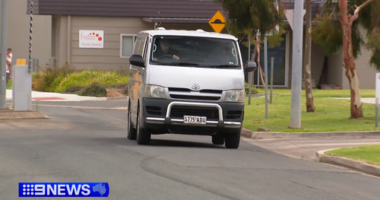Share this @internewscast.com
Key Points
- Australia is preparing to welcome its one-millionth refugee since the conclusion of World War Two.
- Underlying this milestone are significant human narratives of displacement, resilience, and renewal.
- Hazara refugee Sidiqa Faqihi endured almost a decade in uncertainty before finally finding refuge in Australia.
With an anticipated allocation of 20,000 places in both the previous and current financial years, this milestone is expected to be achieved in the initial months of the 2025-26 financial year.
Amid ongoing political discourse about future intake levels, refugee advocates emphasize that the milestone is more than just a statistic — it embodies one million individual paths to safety.

Director of Policy at the Refugee Council of Australia, Rebecca Eckard. Credit: SBS
Decades of political support
Over the past 40 years, Australia has continued to resettle people from war-affected regions, including the Middle East, Africa and Myanmar.

A group of Vietnamese boat people, refugees from the freighter ‘Song Be 12’, arriving in Darwin, Australia, December 1977. Credit: Phillip Green / Keystone / Getty Images
Today, refugees from Afghanistan, Iraq, Syria, Myanmar and countries in the Horn of Africa continue to arrive under the humanitarian program.
Additionally, around 3,000 to 4,000 Ukrainians who initially arrived on temporary humanitarian visas are transitioning to permanent protection, although they are counted separately from the resettlement total.
Australia plays a leading role in global refugee resettlement, often ranking second or third per capita in its humanitarian intake.
There are still more than 7.5 million refugees in the region, many in need of basic services, let alone long-term resettlement.
From limbo to leadership
Faqihi fled Afghanistan in 2013 due to genocide, persecution and discrimination against the Hazara community.

Sidiqa Faqihi (third from right) with teachers from the Cisarua Refugee Learning Centre (CRLC), a refugee established and managed school in Indonesia. Credit: Supplied by Sidiqa Faqihi
She sought asylum in Indonesia, where she remained for nearly a decade without the right to work, study or access healthcare.
“Indonesia is not a signatory to the UN Refugee Convention,” she explained.
We spent nearly ten years in limbo, with no right to study or work. It felt like we were invisible
Sidiqa Faqihi
“It’s just that when you have no option other than leaving your country, saving yourself, saving your family’s life, taking them out of danger,” she said.
A spokesperson from the Department of Home Affairs said: “The department continues to provide services to ensure the well-being of migrants and refugees settling in Australia by responding to their specific needs while also encouraging their independence and participation in the Australian community.”
What the numbers tell us
While we may never know exactly who Australia’s first officially resettled refugee was, what is clear is the lasting impact refugees have had on the nation.

A Hazara community school in Indonesia. According to UNHCR, Indonesia hosted nearly 12,000 refugees and asylum-seekers from 52 different countries as of September 2024. Credit: Supplied by Sidiqa Faqihi
Today, millions of Australians trace their roots to those who arrived seeking safety, whether as parents, grandparents, or great-grandparents.
“Refugee Week (15–21 June) is an opportunity to reflect on Australia’s long history of resettling refugees and others in humanitarian need, and to acknowledge the many contributions they make to Australia,” the Home Affairs spokesperson said.






